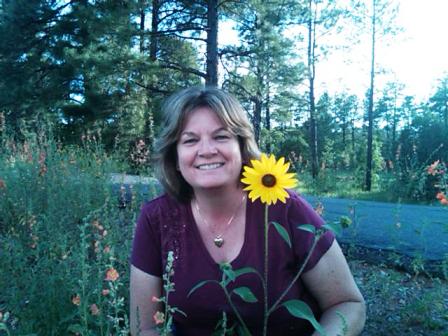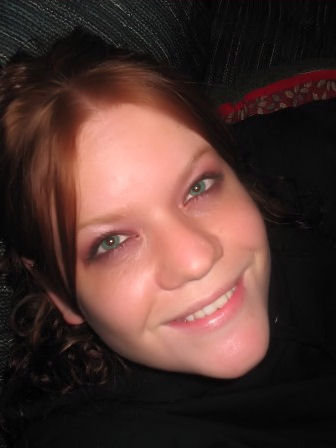July 2012 Newsletter
What´s New at Savon
◄ Back to What´s New At Savon - Monthly Newsletter Home Page
Quote Of The Month: “There is nothing wrong with America that cannot be cured by what is right with America.” (William Clinton - 42nd President)
Congratulations To:
L. Mills of Phoenix, AZ Winner of our June early payment drawing for 1 free additional year of membership.
Congratulations to our winner and thank you to everyone that entered the drawing.
Keeping Fit With Jourdin Hendershot:
 |
The Benefits Of Exercise
Starting with this months newsletter, I will begin an 8 part discussion on the benefits of exercise. This month I will cover the basic benefits of exercise. In the following months I will cover various exercise and fitness topics running the gamut from simple exercises to helpful exercising tips. I invite you to follow along as I explore the Benefits of Exercise.
Exercise is the miracle cure we‘ve always had but many of us have neglected to take the recommended dose for way too long. No matter what your age is, being physically active can lead you to a happier and healthier life.
Exercising daily can help reduce the risk of many diseases such as heart disease, type 2 diabetes and many others. Also this can boost your self-esteem, change sleeping habits and boost your energy levels.
Did you know there are levels of physical activity for all ages?
|
Young People (5 - 18 years old)
- 1 hour of physical activity a day
- Mix your exercises between moderate-intensity (walking, rollerblading) and vigorous-intensity (running, dancing)
- 3 days a week should involve muscle-strengthening
Adults (19 - 64 years old)
- 2½hours of moderate- intensity activity (Walking, cycling)
- 2 - 3 days a week of muscle-strengthening on all muscle groups
Older Adults (65 years and older)
- Mix of moderate and vigorous –intensity activity (running and walking)
- 2 - 3 days a week of muscle-strengthening on all muscle groups
We all know that we are less active nowadays. This is mostly because of technology such as our transportation, appliances, and electronics. But just taking a 1 - 2 hour break to exercise will make you feel so much better!
If you have questions you would like to discuss with Jourdin, feel free to drop her an email by clicking here.
Grandma's Kitchen With Grandma C.:
 |
Quick And Simple Bread Pudding
Ingredients
- 3 eggs
- 2 cups milk (2% or whole milk works best)
- 2 cups brown sugar (light brown)
- 1 tbsp vanilla
- 4 slices of thick sliced bread, such as Texas Toast, cubed into 1" pieces
- 1 cup raisins
- 2 tbsp butter
|
Beat eggs lightly, then add milk, sugar and vanilla, stir. Fold in bread cubes and raisins and pour into a greased baking dish. Dot the mixture with butter and bake in a 350 degree oven for approximately 40 minutes or until pudding is set and slightly browned on top.
Apples can be substituted for raisins or you can even use both for added flavor. You can also add 1 tsp of cinnamon if preferred.
**This recipe is very rich! Not for the serious dieter, for sure.**
If you have a recipe that you would like to share with Grandma C., drop her an email by clicking here.
To Your Health: with Meri Osborne
This article is presented courtesy of Jourdin Hendershot
 |
TDP Mineral Lamp (Teding Diancibo Pu)
PAIN - An unpleasant feeling often caused by intense or damaging stimuli.
We all know what it feels like to stub your toe, or burn your finger but not many people know what it feels like to have a serious injury, where the pain is constantly throbbing, stabbing, aching, or even burning. Individuals with this kind of pain have had some sort of injury in their life time, whether it was a car accident, sport injury or something else.
Did you know that pain is the most common reason people visit the doctor? Pain interferes with a person‘s life and mobility. These individuals go to the doctor to receive some sort of relief whether it is pain medication or physical therapy.
|
When the individual is consulting with their physician, the doctor might recommend the use of the TDP Mineral Lamp (Teding Diancibo Pu) which means special electromagnetic spectrum.
How does this TDP Mineral Lamp work?
The TDP Heating lamp features a round plate coated with a mineral clay formation consisting of 33 earth elements essential to the human body. When activated by the built-in electric heating element, this mineral plate emits a special band of far-infrared waves. As a result, the far-infrared waves are readily absorbed into your body.
If you or a loved one is in pain contact your physician and ask them about the mineral lamp!
The above health material is provided as an information service. It should not be used for diagnostic purposes nor is it intended to take the place of the important relationship between you and your doctor.
News You Can Use: News From Inside Your Dental Plan
A message from Clayton Parker Jr., C.E.O.
Savon - Protecting Your Smile For 20 Years!
The month of July marks a milestone for Savon Dental Plan. It was 20 years ago that my brother Gordon Parker and I started the company with a dream and 5 providers. After 20 short years we now have providers in 27 states and our membership ranges from coast to coast and even into Canada.
We did not get Savon where it is today by ourselves. I would like to take this opportunity to recognize some of the people (past and present) that have contributed to our success.
| Current Employees & Agents |
Past Employees & Agents |
Employees That Have Passed Away |
| Clayton Parker Jr. |
Antoinette Parker |
Gone But Never Forgotten! |
| Corilee Parker |
Dan Gopen |
Gordon Parker - 2008 |
| Lorraine Parker |
Wesley Henry |
Clayton Parker Sr. - 1999 |
| Meredith Osborne |
Dawn Lawler |
Cuvalis "Que" Jeter - 2011 |
| Jourdin Hendershot |
Jennifer Ericson |
Ron Tallent - 2004 |
| Aylana Lawler (summer help) |
Kim Boeckman |
Richard Cervenak - 2005 |
| Martin Schwab (group specialist) |
Dr. Bruce Cohen |
Anne Rosebrook - 2005 |
| June Shaffer (Arizona Life Lines) |
Trudy & Doug Sommerstedt |
Roger Smith - 2010 |
| Sylvia Kelly (California Agent) |
Clayton Parker III |
Rest In Peace! |
I would also like to give special mention to members that have been with Savon since the beginning. With the national average for retention on any plan being 8 years, staying with a plan for 20 years is outstanding.
- Carol Lacy - Joined 8/1992
- Robert Morehouse - Joined 10/1992
- John Ravert - Joined 10/1992
- Richard Boyd - Joined 10/1992
- Larry Hobbs - Joined 11/1992
The members listed above are 20 year members. We have many more members that have been with us for 17, 18 and 19 years. It makes me very proud to know that so many families across the United States have realized the value that my brother and I envisioned 20 years ago.
Thank you to all of our members! We could not have come this far without your trust and support! THANK YOU!!!
As a special way of saying happy birthday, anyone that emails us at newsletter@SavonDentalPlan.com before July 31, 2012 will receive one (1) months additional membership for free.
In the subject line put - Happy Birthday - and in the body of the email put - your last name and membership ID number. We will send you a new sticker for your card within 5 days of receiving your email.
From all of us at Savon, thank you for making us America's Dental Plan!!!
Fun Facts:
Fun Facts about President Obama We Bet You Didn't Know
- Barack Hussein Obama is named after his father, Barack Hussein Obama, Sr. (1936-1982). “Barack” means “blessing/blessed/to bless” in Swahili and Semitic languages, and “Hussein” is a Semitic word meaning “good” or “beautiful.” Swahili was Obama Sr.‘s native language.
- He was known as “O‘Bomber” at high school for his skill at basketball
- He worked in a Baskin-Robbins ice cream shop as a teenager and now can‘t stand ice cream
- He ate dog meat, snake meat, and roasted grasshopper while living in Indonesia
- He promised Michelle he would quit smoking before running for president – he didn‘t
- His desk in his Senate office once belonged to Robert Kennedy
- As a teenager he took drugs including marijuana and cocaine
- He applied to appear in a black pin-up calendar while at Harvard but was rejected by the all-female committee
- He doesn‘t drink coffee and rarely drinks alcohol
- He says his worst habit is constantly checking his BlackBerry
- He carries a tiny Madonna and child statue and a bracelet belonging to a soldier in Iraq for good luck
- He was given the code name “Renegade” by his Secret Service handlers
Come back for more in next months issue!
Dental Talk - A Member Blog Forum:
 |
Come blog with us! Dental Talk with Savon is a fun forum to post your interesting topics! Your comments are welcome, it‘s free to use and no membership is required.
Some of the topics include;
|
These are just a few of the topics. Our blog site contains many other interesting topics. Please join us!!
Insurance Insight: - With June Shaffer
from Arizona Life Lines
Understanding Insurance Language - Part Six Of An Eight Part Series
This is a continuation of our June 2012 series dealing with breaking down of some of the more commonly misunderstood phrases and definitions encountered in the search for adequate health coverage. You may already be familiar with several, but please read on - some of these definitions go beyond the written word.
- SPINAL SUBLUXATION: Also called "spinal manipulation" - a lot of carriers still won't use the word "chiropractic' in their policy or brochure, although subluxation can also be performed by osteopathic and orthopedic physicians. This is often a limited-use benefit, due to the abuse insurance companies have experienced. Many people seek this kind of therapy the way the rich go to a masseuse; as a result, most carriers have had to limit the number of visits and how much they will contribute toward those visits, and under what circumstances, or else they make the office charges subject to the deductible as opposed to part of a co-pay plan. But at least there is some coverage. Visiting a DO (Doctor of Osteopathic) is usually more acceptable to the insurance carriers than visiting a chiropractor, from a co-pay standpoint. More and more PPOs, however, are starting to cover chiropractic under co-pays.
-
GROUP vs INDIVIDUAL POLICY: Stay away from individual policies where you are the group (exception: follows, as noted). You cannot get a group policy if you're an individual, unless you have the only plan currently available to groups of one in AZ – and it is very costly. And, you must be a bona fide self-employed individual (having a corporation does not make you self-employed). A true "group" policy has one common employer paying the premium, or a good portion of it. An individually underwritten plan which can turn you down based on your health, is not a group plan although it may use the word “group” in its legal description. Also, today, a lot of plans are "backed" by organizations or associations, which call themselves groups, with policies they label as group policies, but these are NOT group insurance. An established, honest-to-goodness group insurance policy cannot turn you down based on medical history.
If you have an individual policy, make sure that your rates can only be raised if the rates are likewise raised for others in your age group or geographical location, and not based on your medical claims. These types of individual plans make a lot of sense.
Don't be fooled (or impressed) by the names of groups or associations offering insurance coverage: independent business owners, self-employed, entrepreneurs… it doesn't matter. You don't even have to fit the category depicted by the name of a group; it's just a name. They usually take anyone who's healthy. These associations issue individual certificates of coverage, so a person may be underwritten individually but is part of a large association. However, this is not considered true group coverage, such as you would receive working for a Honeywell, IBM or Sears.
Group plans are not less expensive than individual plans, in most cases. The theory that if you buy in quantity you pay less is not true when it comes to insurance unless the employer has a really large group. Often, because you are a member of a true group policy, you will find that your portion of the cost is higher than it might be on your own private plan.
-
DUES, ENROLLMENT or INITIATION FEES: If a health policy has any kind of start-up fee, it shouldn't be one that makes you cringe. Sometimes associations or groups have enrollment fees; I've seen them run from $50 to over $115. Are they worth it? They can be, if you use their benefits (which can be substantial). But don't let the benefits of the association overshadow the benefits of the health policy. Association plans also charge a monthly dues, which range from $20-$50 per month. These are not negotiable.
Recommendation: If you are considering an association plan (one with lots of bells and whistles which have nothing to do with health coverage), look for a low start-up fee (if any), and low monthly dues (anything over $5 per month is too much). And if the agent doesn't quote those fees OR add them in till you get to the end of completing your application - throw him out! Don't be intimidated. And if you apply for an association plan and then change your mind, tell their home office you want your money back. Do not let them tell you it is non-refundable - it is refundable
- RATE INCREASES:
Most carriers will have periodic increases, at least once a year, sometimes - unfortunately - more often. I've heard agents say that not only had their premiums not had any rate increases in the last two or three years, but the rates had actually gone down! Sorry, that's usually a dream - the dream of the agent who hopes you believe him. (One in 40 carriers will have a rate decrease on occasion – but not often.) For purposes of a new quote to someone not already on a plan, the premium may be lower than it was for someone who signed up eight or nine months earlier, due to that carrier's rate fluctuations, but rates don't usually drop once you are on a plan.
You should have no rate increase at all for the first year. You should ask how rate increases are based. Are they claims- based or based on increases in medical costs in your area? You need to know exactly how a carrier determines and allocates its increases before you sign up. Ask about last year's increase. Reasonable or unreasonable is usually based on your geographical area. In Arizona, rate increases across the board averaged about 18-36% in 2011, but some carriers held at 14%-22% while others jumped to 36%. In New York, 35% might be considered a low or average increase, but here it would be considered high.
Join us next month when we cover Cancellation • Fine Print • and Medical Records
|
|




